The content of the article
To develop the flexibility of the comb, large adductor, long and short muscles is useful at any age. Their elasticity does not depend on the complexion of the novice athlete and his body weight. Thanks to training aimed at increasing the elasticity of muscles and tendons, improves blood circulation in the lower extremities and pelvis. The likelihood of varicose veins is reduced, and the gait becomes more graceful.
No fuss
Children are able to sit on the twine for 3-4 lessons, because their body is flexible and supple. Adults far from rhythmic gymnastics and ballet will need 1-2 months. The crest and adductor muscles must work constantly, so you will have to allocate 15-30 minutes daily for special exercises. People sweating on fitness can reduce the number of classes to 4-5 per week.
Twine is fun, but dangerous. Often goes to the hamstrings and hips. The lower back and ankles suffer. So that after training you do not have to go to the traumatologist, you need to carefully and actively warm up. It is recommended to devote 10 minutes to running. Having a rest after a light warm-up, you need to:
- swing the lower limbs, bending them and straightening;
- jump rope;
- to dance, moving all parts of the body;
- Sit down and walk a few meters.
Warm up is carried out in a warm room, after taking a hot shower to wake up and warm up the muscles. You need to move with pleasure, enjoying the process. Feel how every centimeter of the body tenses and works. Stretch smoothly and gently.
Choose only a comfortable and elastic shape. Not sexy and seductive, but practical. Wear socks on your feet so that they slip better on the floor. The number of repetitions is not important. The main thing is that the muscles and tendons are ready for intensive work.
Beginners are advised to first sit on a longitudinal twine, which is easier and safer. Then you can master the transverse variety.
After warming up
People who cannot fold in half will not sit on the twine per day. Untrained hamstrings cannot be developed in 24 hours, as are thigh muscles. At the initial stage, all exercises will be elementary and uncomplicated. They are aimed at the development of plasticity and flexibility of the back, calves and hips.
№1
Palms cannot be unclenched. They should reach for the ceiling. Measure when a pulling sensation appears in the chest. When properly performed, the lower back should not bend in an arc. She is straight, like her back.
№2
Having taken a sitting position, straighten up and pull the feet folded together to the groin. The body as you exhale slowly leans forward. To twist the fingers and bring them to the chest, and with bent palms rest against the protruding knees. Press on the lower limbs, trying to put them on the floor. Caviar and hips calmly reach the ground, and there is no discomfort? Then the folded feet are moved closer to the crotch. During the exercise, the forehead tries to lie on a hard surface near the feet.
№3
Remaining in a sitting position, slowly spread your legs so that they form the English letter “V”. Beginners are advised to push their hips apart until a pulling sensation appears in the tendons or muscles. Count to 5 and wait for the body to adapt. Turning the body 45 degrees to the left or right, lean toward the leg. Fold in half, palm under the limb.Swing, not letting go of the hip, 60 seconds, dropping lower and lower. Repeat manipulations with the second leg.
№4
Returning to a sitting position with the legs wide apart, grab your feet with your palms. Grasp the socks. You can’t hunch. The chest, without bending, leans forward smoothly, trying to touch the training mats. A pulling pain should appear in the inside of the thigh. If it is not, you need to lean lower.
№5
Go up to a table or high chair. Tilt your leg back so that an angle of 90 degrees is formed between the limbs. The second is on the floor. The knees bend in the opposite direction when the straight torso bends to the raised limb. You need to try and lay your cheek on your thigh or calf. Feeling a pulling pain, freeze and take 5 deep exhalations.
Remaining in this position, you can slowly lower the straight body down. The fingers are trying to reach the foot and lie on the floor. The second leg to hold on to a chair or sofa, so as not to lose balance.
№6
Get down on the buttocks, stretching out the lower limbs. Toes look at the beautiful chandelier in the living room. The knees, like the heels, are pressed together. Look at the feet and at the same time tilt the chest forward, and reach for the toes with your hands. Be sure to retract the abdominal muscles as you exhale to form a beautiful and toned abs. Socks stretch from the torso.
№7
Sit down. Leaning against the wall with the lower back and shoulder blades, place the lower limbs so that an angle of 90 degrees is formed between them. One leg remains straight, the toe is looking forward. Bend the second at the knee, push it to the perineum. The foot rests on the thigh of a straightened leg.
Grasping with one hand on the elbow of the other, make smooth turns left and right. Only the body works, the lower part of the body remains stationary. After 20-30 repetitions, you need to tilt the body down, trying to touch the thumb of the straightened leg. Fix the body for 20 seconds, you can gently swing to increase tension in the hips.
The task is getting harder
Flexibility for beginners develops in 2–4 weeks. If an athlete reaches his feet without problems and folds in half without experiencing severe muscle pain, he is recommended to diversify the workout with more complex exercise options.
№1
To stand in the middle of the room, connecting the heels and knees together. Tilt the body down, trying to wrap your palms around your feet, or at least your ankles. Legs cannot be bent, they remain flat. The crown is looking at the floor. Leaning as low as possible, freeze and count down 20 seconds. Hands hold on to the calves, take slow breaths, and exhale exert pressure and draw in the stomach.
№2
Kneeling, stretching one leg forward. Straighten and transfer weight to it. The sock extends from the body and slightly upwards, so that tension appears in the calf muscles and hamstrings. Touch the floor with your hands. The second leg is bent, the toes rest against the ground.
Stretch your body forward while lowering your pelvis. Perform exercise 60 seconds. Take a short break, then work out the second leg.
№3
Standing, widely spread the lower limbs. It is advisable to put on socks and slide on the floor, keeping your hands on the wall. When a drawing pain appears in the legs, stop and rest your feet on the ground. Putting your palms on your hips, gently transfer weight from the right lower limb to the left and vice versa. Bend one leg, which has a load, in the knee, and straighten the second. Repeat 15-30 times.
№4
Exercise helps to stretch your thigh muscles. You will need a towel or fitness mat that is pushed against the wall. Sit down. Bend the right leg forward and, slightly bending at the knee, rest your foot on the floor. Transfer weight to her. The left heel looks at the ceiling. The fingers rest against the wall, the knee is on the rug.
Gently pull the right leg forward, lowering the pelvis. Stop when an uncomfortable sensation appears in the ligaments. To make it easier to maintain balance, palms are advised to put on the right thigh.
Stretch for 25–35 seconds. Relax a little, stretch the second leg.
№5
Lie on your stomach on the floor and raise your upper body, arms straightened. The left leg remains on the ground. The sock reaches for the opposite wall. Lift the right leg and put forward, bending at the knee. The pelvis does not touch the floor. The right foot is located between the palms, the chin looks at the ceiling, the neck is straight.
The left thigh is torn off the ground, the knee and ankle lie on the floor. Try to lower the right bent leg as low as possible. A basin to reach the palms, swaying smoothly up and down. The duration of the exercise is 10-20 seconds. Change legs and repeat manipulations.
High level
If there is very little left before full twine, the duration of the training is increased and new exercises are added. They are quite complex, therefore they are intended for athletes who have been training for more than 1-2 months.
№1
This option is borrowed from yogis. It allows you to work out the crest and large adductor muscles, as well as the hamstrings.
Standing in a classic position with legs wide apart, lower the body down and rest your hands on the floor. Connect the lower limbs so that they are in contact with the thumbs. Transfer weight to your right arm and leg. Raise the left limbs so that the palm and foot are looking at the ceiling.
Grasp the ankle with your hand and pull the leg to the face without bending it at the knee. The spine is straight, the shoulders do not slouch. The neck is straight, slightly tense. If you can’t pull the leg toward you, you just need to lift it and hold it until a pulling pain in the muscles and tendons appears.
№2
Relax your shoulders, take 5-6 deep breaths. Gently return to the original position, and then repeat the exercise for the left leg. Thanks to the vertical twine, the thigh muscles develop and the tendons stretch.
There is a second version of this exercise. The starting position is the same, but now I raise my leg forward. Hold by the wall or chair. The limb should be straight, it cannot be bent at the knee. You need to grab your thumb or foot with your free hand and pull your leg to the ceiling. Do not hump or tilt the case forward. The neck is flat and slightly tense.
№3
To complete this exercise, you need to sit on an incomplete string, placing several thick books or another stable support under the front leg with a height of 20–25 cm. Slowly slide your hind limb, trying to lower the pelvis to the floor. Hands hold on a chair, you can cross them on your chest. A slight pulling pain will appear in the muscles. When it intensifies, you need to stop and freeze. If you continue, you can pull out the tendons or injure your hip joints.
Twine is a great way to keep fit. But it is impossible to perform exercises for stretching muscles and tendons at elevated temperatures, diseases of the joints and heart, inflammatory processes in the body. Healthy and motivated beginners who have no contraindications wish good luck and patience, because only hard work will make the body flexible and plastic.
Video: how to quickly sit on the twine

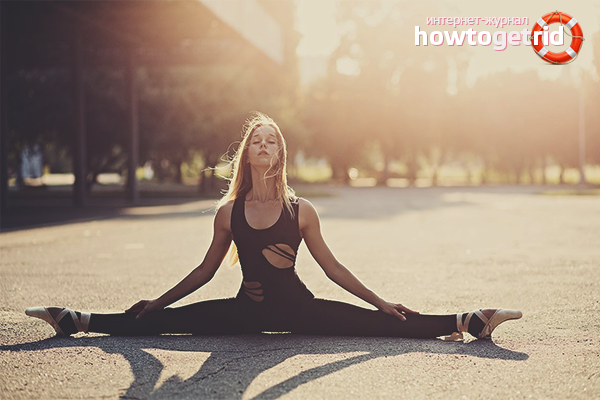

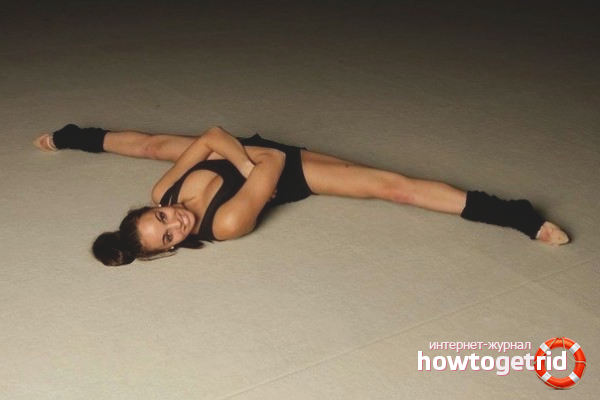
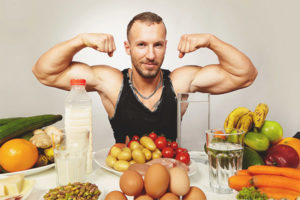
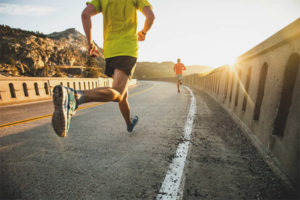
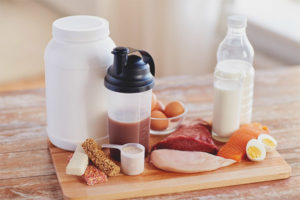
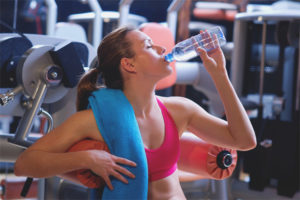
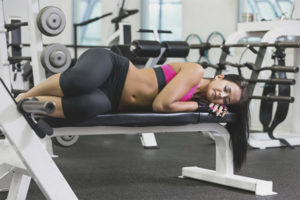
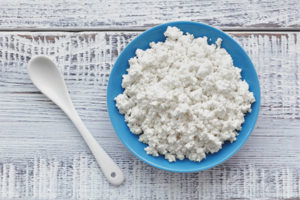


Submit